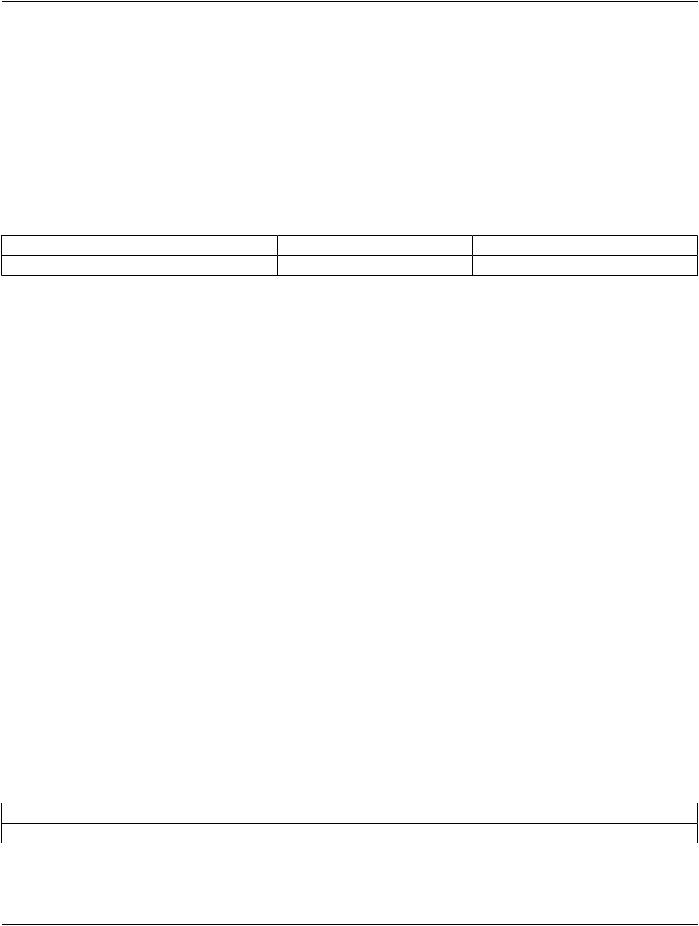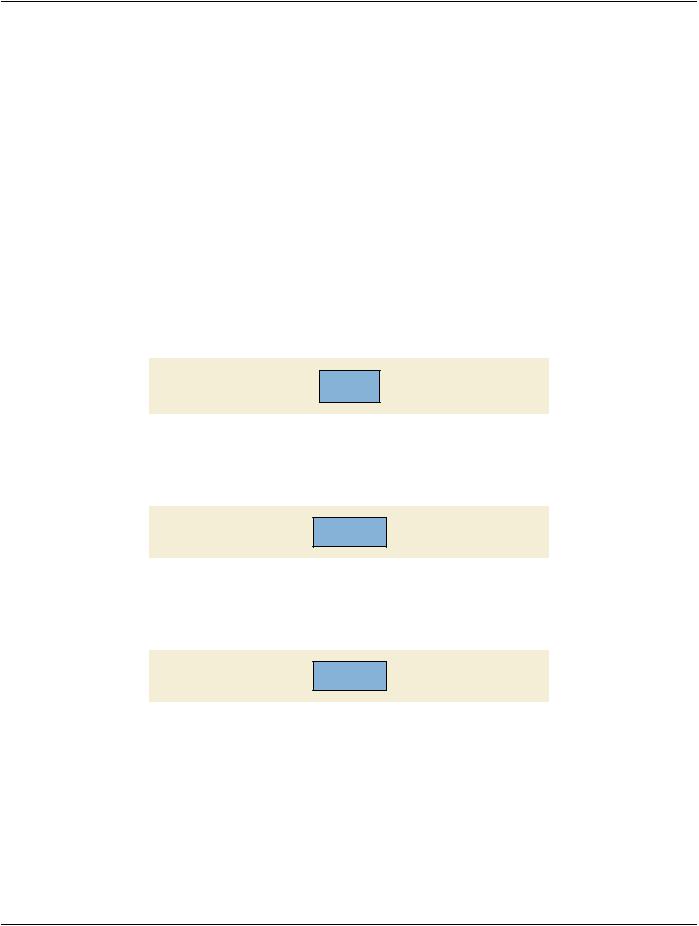
PS-2020a / part04
.pdf
|
|
DICOM PS3.4 2020a - Service Class Specifications |
Page 341 |
|
Service Status |
Further Meaning |
Status Codes |
Related Fields |
|
Warning |
Sub-operationsComplete-OneormoreFailures |
B000 |
(0000,1020) |
|
|
or Warnings |
|
|
(0000,1021) |
|
|
|
|
|
|
|
|
|
(0000,1022) |
|
|
|
|
(0000,1023) |
Success |
Sub-operations Complete - No Failures or |
0000 |
(0000,1020) |
|
|
Warnings |
|
|
(0000,1021) |
|
|
|
|
|
|
|
|
|
(0000,1022) |
|
|
|
|
(0000,1023) |
Pending |
Sub-operations are continuing |
FF00 |
(0000,1020) |
|
|
|
|
|
(0000,1021) |
|
|
|
|
(0000,1022) |
|
|
|
|
(0000,1023) |
Some Failure Status Codes are implementation specific.
An SCP implementation shall assign specific failure status codes by replacing each 'x' symbol with a hexadecimal digit in the range from 0 to F. An SCP implementation wishing to differentiate between causes of "Failed: Unable to process" Failure Meaning shall assign those causes specific Status Code Values within valid range specified in Table Y.4-2.
An SCU implementation shall recognize any Failure Status Code within the value range specified in Table Y.4-2 as an indicator of the Failure Meaning stated in the table. There is no requirement for an SCU implementation to differentiate between specific Status Codes within the valid range.
Z.4.2.1.5 Number of Remaining Sub-Operations
Inclusion of the Number of Remaining Sub-operations shall be as specified in Section C.4.3.1.5
Z.4.2.1.6 Number of Completed Sub-Operations
Inclusion of the Number of Completed Sub-operations shall be as specified in Section C.4.3.1.6
Z.4.2.1.7 Number of Failed Sub-Operations
Inclusion of the Number of Failed Sub-operations shall be as specified in Section C.4.3.1.7
Z.4.2.1.8 Number of Warning Sub-Operations
Inclusion of the Number of Warning Sub-operations shall be as specified in Section C.4.3.1.8.
Z.4.2.2 C-GET SCU and C-STORE SCP Behavior
Z.4.2.2.1 Baseline Behavior of SCU
An SCU conveys the following semantics with a C-GET request:
•The SCU shall specify one Instance UID or a list of Instance UIDs.
•The SCU shall have proposed sufficient presentation contexts at Association establishment time to accommodate expected C- STORE sub-operations that will occur over the same Association. The SCU of the Query/Retrieve Service Class shall serve as the SCP of the Storage Service Class.
- Standard -

Page 342 |
DICOM PS3.4 2020a - Service Class Specifications |
•The SCP of the Storage Service Class shall not store the incomplete SOP Instance; rather the behavior is implementation defined.
•TheSCUshallacceptC-GETresponseswithstatusequaltoPendingduringtheprocessingoftheC-STOREsub-operations.These responses indicate the number of Remaining, Completed, Failed and Warning C-STORE sub-operations.
•The SCU shall interpret a C-GET response with a status equal to Success, Warning, Failure, or Refused as a final response. The final response indicates the number of Completed sub-operations and the number of Failed C-STORE sub-operations resulting from the C-GET operation. The SCU shall interpret a status of:
•Success to indicate that all sub-operations were successfully completed
•Failure or Refused to indicate all sub-operations were unsuccessful
•Warning in all other cases. The Number of Completed Sub-Operations (0000,1021), Number of Warning Sub-Operations (0000,1023), Number of Failed Sub-Operations (0000,1022) can be used to obtain more detailed information.
•The SCU may cancel the C-GET operation by issuing a C-GET-CANCEL request at any time during the processing of the C-GET request. A C-GET response with a status of Canceled shall indicate to the SCU that the retrieve was canceled. Optionally, the C- GET response with a status of Canceled shall indicate the number of Completed, Failed, and Warning C-STORE sub-operations. If present, the Remaining sub-operations count shall contain the number of C-STORE sub-operations that were not initiated due to the C-GET-CANCEL request.
•The SCP of the Storage Service Class shall not return a status of "Error: Data Set does not match SOP Class" (A9xx) or "Warning: Data Set does not match SOP Class" (B007) due to the absence of the Attributes described in Section Z.1.3.
Z.4.2.2.2 Extended Behavior of SCU
The extended behavior of the SCU shall be as specified in Section C.4.3.2.2, except that Relational-retrieve shall not be supported.
Z.4.2.3 C-GET SCP and C-STORE SCU Behavior
Z.4.2.3.1 Baseline Behavior of SCP
An SCP conveys the following semantics with a C-GET response:
•The SCP shall identify a set of Entities at the level of the transfer based upon the values in the Unique Keys in the Identifier of the C-GET request.
•The SCP shall initiate C-STORE sub-operations for the identified SOP Instances, but shall not include in this C-STORE sub-oper- ation the Attributes described in section Section Z.1.3. The SCP of the Query/Retrieve Service Class shall serve as an SCU of the Storage Service Class.
•ApartfromtheAttributeslistedinsectionSectionZ.1.3,theSOPInstancesentviatheC-STOREsub-operationshallbeunchanged, and no corresponding changes to other Attributes shall be made.
Note
In particular, the Study, Series and SOP Instance UIDs and SOP Class UID will not be altered.
•The SCP shall initiate C-STORE sub-operations over the same Association for all SOP Instances specified in the C-GET request.
•A sub-operation is considered a Failure if the SCP is unable to initiate a C-STORE sub-operation because the Query/Retrieve SCU did not offer an appropriate presentation context for a given stored SOP Instance.
•Optionally, the SCP may generate responses to the C-GET with status equal to Pending during the processing of the C-STORE sub-operations.TheseresponsesshallindicatethenumberofRemaining,Completed,Failure,andWarningC-STOREsub-operations.
•WhenthenumberofRemainingsub-operationsreacheszero,theSCPshallgenerateafinalresponsewithastatusequaltoSuccess, Warning or Failed. The status contained in the C-GET response shall contain:
•Success if all sub-operations were successfully completed
- Standard -

DICOM PS3.4 2020a - Service Class Specifications |
Page 343 |
•Failure if all sub-operations were unsuccessful
•Warning in all other cases.
•The SCP may receive a C-GET-CANCEL request at any time during the processing of the C-GET request. The SCP shall interrupt all C-STORE sub-operation processing and return a status of Canceled in the C-GET response. The C-GET response with a status of Canceled shall contain the number of Completed, Failed, and Warning C-STORE sub-operations. If present, the Remaining sub- operations count shall contain the number of C-STORE sub-operations that were not initiated due to the C-GET-CANCEL request.
•If the SCP manages images in multiple alternate encodings (see Section C.6.1.1.5.1), only one of the alternate encodings of an image shall be used as the existing SOP Instance from which frames are to be extracted.
Z.4.2.3.2 Extended Behavior of SCP
The extended behavior of the SCP shall be as specified in Section C.4.3.3.2, except that Relational-retrieve shall not be supported.
Z.5 Association Negotiation
Association establishment is the first phase of any instance of communication between peer DICOM AEs. AEs supporting DICOM Query/Retrieve SOP Classes utilize Association establishment negotiation by defining the use of Application Association Information. See PS3.7 for an overview of Association negotiation.
SOP Classes of the Composite Instance Retrieve Without Bulk Data Service, which include retrieval services based on the C-GET operation, use the SCP/SCU Role Selection Sub-Item to identify the SOP Classes that may be used for retrieval.
Z.5.1 Association Negotiation for C-GET SOP Classes
Rules are as specified in Section C.5.3, except that the extended negotiation sub-item, if used, shall be used as defined in Sec- tion Y.5.1.1.
Note
1.Though converted images may be specified by their SOP Instance UID in the Request Identifier, which is always at the instance level, there remains a need for extended negotiation and specification of the Query/Retrieve View in order to assurethatreferentialintegrityismaintainedwithinthereturnedSOPInstances(e.g.,thatareferencetoaSOPInstance UID is to a converted image or not, as appropriate).
2.Relational-retrieval is not applicable to this SOP Class, hence the Extended Negotiation Sub-Item does not include the use of that byte.
Z.6 SOP Class Definitions
Z.6.1 Composite Instance Retrieve Without Bulk Data SOP Class Group
In the Composite Instance Retrieve Without Bulk Data Only Information Model, only a single Retrieve Level is used.
Table Z.6.1-1. Retrieve Level Value for Retrieve Without Bulk Data
Retrieve Level |
Value in (0008,0052) |
Composite Instance |
IMAGE |
Note |
|
The use of the word "IMAGE" rather than "Composite Instance" is historical to allow backward compatibility with previous editions of the Standard. It should not be taken to mean that Composite Instances of other than image type are not included at the level indicated by the value IMAGE.
- Standard -

Page 344 |
DICOM PS3.4 2020a - Service Class Specifications |
Z.6.1.1 Composite Instance Retrieve Without Bulk Data Information Model
Z.6.1.1.1 E/R Model
The Composite Instance Retrieve Without Bulk Data Only Information Model has only a single level: IMAGE.
Z.6.1.1.2 Composite Instance Level
Table Z.6-1 defines the keys at the Composite Instance level of the Composite Instance Retrieve Without Bulk Data Query/Retrieve Information model.
TableZ.6-1.CompositeInstanceLevelKeysfortheCompositeInstanceRootQuery/RetrieveInformation
Model
Attribute Name |
Tag |
Matching Key Type |
SOP Instance UID |
(0008,0018) |
U |
Z.6.1.1.3 Scope of the C-GET Commands and Sub-Operations
A C-GET request may only be performed at the IMAGE level of the Query/Retrieve Model. A C-GET indicates that selected individual Composite Instances, without bulk data Attributes shall be transferred.
Z.6.1.2 Conformance Requirements
An implementation may conform to one of the SOP Classes of the Composite Instance Retrieve Without Bulk Data SOP Class Group as an SCU, SCP or both. The Conformance Statement shall be in the format defined in PS3.2.
Z.6.1.2.1 SCU Conformance
An implementation that conforms to one of the SOP Classes of the Composite Instance Retrieve Without Bulk Data SOP Class Group as an SCU shall support retrievals against the Query/Retrieve Information Model described in Section Z.6.1.1 using the C-GET SCU BehaviordescribedinSectionZ.4.2.2.AnimplementationthatconformstooneoftheSOPClassesoftheCompositeInstanceRetrieve WithoutBulkDataSOPClassGroupasanSCU,andthatgeneratesretrievalsusingtheC-GEToperation,shallstateinitsConformance Statement the Storage Service Class SOP Classes under which it shall support the C-STORE sub-operations generated by the C- GET.
Z.6.1.2.2 SCP Conformance
An implementation that conforms to one of the SOP Classes of the Composite Instance Retrieve Without Bulk Data SOP Class Group as an SCP shall support retrievals against both levels of the Retrieve Information Model described in Section Z.6.1.1 using the C- GETSCPBehaviordescribedinSectionZ.4.2.3.AnimplementationthatconformstooneoftheSOPClassesoftheCompositeInstance Retrieve Without Bulk Data SOP Class Group as an SCP, and that satisfies retrievals using the C-GET operation, shall state in its ConformanceStatementtheStorageServiceClassSOPClassesunderwhichitshallsupporttheC-STOREsub-operationsgenerated by the C-GET.
Z.6.1.3 SOP Classes
The SOP Classes in the Composite Instance Retrieve Without Bulk Data SOP Class Group of the Query/Retrieve Service Class identify the Composite Instance Retrieve Without Bulk Data Only Information Model, and the DIMSE-C operations supported. The Standard SOP Classes are listed in Table Z.6.1.3-1.
Table Z.6.1.3-1. SOP Classes for Composite Instance Query/Retrieve Root
SOP Class Name |
SOP Class UID |
Composite Instance Retrieve Without Bulk Data - GET |
1.2.840.10008.5.1.4.1.2.5.3 |
- Standard -

DICOM PS3.4 2020a - Service Class Specifications |
Page 345 |
AA Ophthalmic Refractive Measurements
Storage SOP Classes (Normative)
AA.1 Scope
Refractive instruments are the most commonly used instruments in eye care. At present many of them have the capability for digital output,buttheirdataismostoftenaddressedbymanualinputintoapaperorelectronicrecord.Lensometry,Autorefraction,Keratometry, Subjective Refraction, and Visual Acuity Measurements Storage SOP Classes support devices such as lensometers, auto-refractors, keratometers, autophoropters, and autoprojectors.
AA.2 Behavior of a SCP
For a device that is both a SCU and a SCP of the aforementioned Storage SOP Classes, in addition to the behavior for the Storage Service Class specified in Section B.2.2, the following additional requirements are specified for Structured Reporting Storage SOP Classes:
•A SCP of these SOP Class shall support Level 2 Conformance as defined in Section B.4.1.
Note
ThisrequirementmeansthatallType1,Type2,andType3AttributesdefinedintheInformationObjectDefinitionandPrivate Attributes associated with the SOP Class will be stored and may be accessed.
- Standard -

Page 346 |
DICOM PS3.4 2020a - Service Class Specifications |
- Standard -

DICOM PS3.4 2020a - Service Class Specifications |
Page 347 |
BB Implant Template Query/Retrieve Service
Classes
BB.1 Overview
BB.1.1 Scope
The Implant Template Query/Retrieve Service Classes define application-level classes-of-service that facilitate access to Implant Template and Implant Assembly Template composite objects.
BB.1.2 Conventions
KeyAttributesservetwopurposes;theymaybeusedasMatchingKeyAttributesorasReturnKeyAttributes.MatchingKeyAttributes may be used for matching (criteria to be used in the C-FIND request to determine whether an entity matches the query). Return Key AttributesmaybeusedtospecifydesiredreturnAttributes(whatelementsinadditiontotheMatchingKeyAttributeshavetobereturned in the C-FIND response).
Note
Matching Keys are typically used in an SQL 'where' clause. Return Keys are typically used in an SQL 'select' clause to convey the Attribute Values.
Matching Key Attributes may be of Type "required" (R) or "optional" (O). Return Key Attributes may be of Type 1, 1C, 2, 2C, 3 as defined in PS3.5.
BB.1.3 Query/Retrieve Information Model
In order to serve as an SCP of the Implant Template Query/Retrieve Service Class, a DICOM AE possesses information about the Attributes of a number of Implant Template or Implant Assembly Template composite SOP Instances. The information is organized into an Information Model. The Information Models for the different SOP Classes specified in this Annex are defined in Section BB.6.
BB.1.4 Service Definition
Two peer DICOM AEs implement a SOP Class of an Implant Template or Implant Assembly Template Query/Retrieve Service Class with one serving in the SCU role and one serving in the SCP role. SOP Classes of the Implant Template and Implant Assembly Template Query/Retrieve Service Classes are implemented using the DIMSE-C C-FIND, C-MOVE and C-GET services as defined in PS3.7.
An SCP of this SOP Class shall support Level-2 conformance as defined in Section B.4.1.
The semantics of the C-FIND service are the same as those defined in the Service Definition of the Basic Worklist Management Service Class.
The semantics of the C-MOVE service are the same as those defined in the Service Definition of the Query/Retrieve Service Class, with the exception that there is only one level of retrieval.
The semantics of the C-GET service are the same as those defined in the Service Definition of the Query/Retrieve Service Class, with the exception that there is only one level of retrieval.
BB.2 Implant Template Information Models Definitions
The Implant Template, Implant Assembly Template, and Implant Template Group Information Models are identified by the SOP Class negotiated at Association establishment time. Each SOP Class is composed of both an Information Model and a DIMSE-C Service Group.
- Standard -

Page 348 |
DICOM PS3.4 2020a - Service Class Specifications |
The Implant Template, Implant Assembly Template, and Implant Template Group Information Models are defined in Section BB.6, with the Entity-Relationship Model Definition and Key Attributes Definition analogous to those defined in the Worklist Information Model Definition of the Basic Worklist Management Service.
BB.3 Implant Template Information Models
The Implant Template Information Models are based upon a one level entity:
•Implant Template object instance.
The Implant Template object instance contains Attributes associated with the Implant Template object IE of the Composite IODs as defined in PS3.3.
The Implant Assembly Template Information Model is based upon a one level entity:
•Implant Assembly Template object instance.
The Implant Assembly Template object instance contains Attributes associated with the Implant Assembly Template object IE of the Composite IODs as defined in PS3.3.
The Implant Assembly Group Information Model is based upon a one level entity:
•Implant Template Group object instance.
The Implant Template Group object instance contains Attributes associated with the Implant Template Group object IE of the Com- posite IODs as defined in PS3.3.
BB.4 DIMSE-C Service Groups
BB.4.1 C-FIND Operation
See the C-FIND Operation definition for the Basic Worklist Management Service Class (K.4.1), and substitute "Implant Template" for "Worklist". The "Worklist" Search Method shall be used.
The SOP Class UID identifies the Implant Template or Implant Assembly Template, respectively Information Model against which the C-FIND is to be performed. The Key Attributes and values allowable for the query are defined in the SOP Class definitions for the Implant Template and Implant Assembly Template Information Model.
BB.4.1.1 Service Class User Behavior
When receiving several Implant Template Instances with the same Implant Part Number, the receiving application shall use Effective DateTime (0068,6226) to determine the appropriate Instance.
BB.4.1.2 Service Class Provider Behavior
An SCP of this SOP Class shall support Level-2 conformance as defined in Section B.4.1.
BB.4.2 C-MOVE Operation
See the C-MOVE Operation definition for the Query/Retrieve Service Class (C.4.2). No Extended Behavior or Relational-Retrieve is defined for the Implant Template and Implant Assembly Template Query/Retrieve Service Classes.
Query/Retrieve Level (0008,0052) is not relevant to the Implant Template and Implant Assembly Template Query/Retrieve Service Classes, and therefore shall not be present in the Identifier. The only Unique Key Attribute of the Identifier shall be SOP Instance UID (0008,0018). The SCU shall supply one UID or a list of UIDs.
Note
More than one entity may be retrieved, using List of UID matching.
- Standard -

DICOM PS3.4 2020a - Service Class Specifications |
Page 349 |
BB.4.3 C-GET Operation
See the C-GET Operation definition for the Query/Retrieve Service Class (C.4.2). No Extended Behavior or Relational-Retrieve is defined for the Implant Template and Implant Assembly Template Query/Retrieve Service Classes.
Note
More than one entity may be retrieved, using List of UID matching.
BB.5 Association Negotiation
See the Association Negotiation definition for the Basic Worklist Management Service Class (K.5).
BB.6 SOP Class Definitions
BB.6.1 Implant Template Information Model
BB.6.1.1 E/R Models
The Implant Template Information Model consists of a single entity. In response to a given C-FIND request, the SCP shall send one C-FIND response per matching Implant Template Instance.
Defined
Procedure
Protocol
Figure BB.6-1. Implant Template Information Model E/R Diagram
The Implant Assembly Template Information Model consists of a single entity. In response to a given C-FIND request, the SCP shall send one C-FIND response per matching Implant Assembly Template Instance.
Implant Assembly
Template
Figure BB.6-2. Implant Assembly Template Information Model E/R Diagram
The Implant Template Group Information Model consists of a single entity. In response to a given C-FIND request, the SCP shall send one C-FIND response per matching Implant Template Group Instance.
Implant Template
Group
Figure BB.6-3. Implant Template Group Information Model E/R Diagram
BB.6.1.2 Implant Template Attributes
BB.6.1.2.1 Generic Implant Template Attributes
Table BB.6-1 defines the Attributes of the Generic Implant Template Information Model:
- Standard -

Page 350 DICOM PS3.4 2020a - Service Class Specifications
Table BB.6-1. Attributes for the Implant Template Information Model
Description / Module |
Tag |
Matching KeyReturn Key |
Remark / Matching Type |
|
|
|
Type |
Type |
|
SOP Common |
|
|
|
|
Specific Character Set |
(0008,0005) |
- |
1C |
This Attribute is required if expanded or |
|
|
|
|
replacement character sets are used. See |
|
|
|
|
Section C.2.2.2 and Section C.4.1.1. |
SOP Class UID |
(0008,0016) |
R |
1 |
|
SOP Instance UID |
(0008,0018) |
U |
1 |
|
Implant Template |
|
|
|
|
Manufacturer |
(0008,0070) |
R |
1 |
Shall be retrieved with Single Value, Wild |
|
|
|
|
Card, or Universal Matching. |
Implant Name |
(0022,1095) |
R |
1 |
Shall be retrieved with Single Value, Wild |
|
|
|
|
Card, or Universal Matching. |
Implant Size |
(0068,6210) |
R |
2 |
Shall be retrieved with Single Value, Wild |
|
|
|
|
Card, or Universal Matching. |
Implant Part Number |
(0022,1097) |
R |
1 |
Shall be retrieved with Single Value, Wild |
|
|
|
|
Card, or Universal Matching. |
Replaced Implant Template |
(0068,6222) |
R |
2 |
This Attribute shall be retrieved with |
Sequence |
|
|
|
Sequence or Universal matching. |
>Referenced SOP Class UID |
(0008,1150) |
R |
1 |
ShallberetrievedwithListofUIDMatching. |
>ReferencedSOPInstanceUID |
(0008,1155) |
R |
1 |
ShallberetrievedwithListofUIDMatching. |
Derivation Implant Template |
(0068,6224) |
R |
2 |
This Attribute shall be retrieved with |
Sequence |
|
|
|
Sequence or Universal matching. |
>Referenced SOP Class UID |
(0008,1150) |
R |
1 |
ShallberetrievedwithListofUIDMatching. |
>ReferencedSOPInstanceUID |
(0008,1155) |
R |
1 |
ShallberetrievedwithListofUIDMatching. |
Effective DateTime |
(0068,6226) |
R |
1 |
Shall be retrieved with Single Value or |
|
|
|
|
Range Matching. |
Original Implant Template |
(0068,6225) |
R |
2 |
This Attribute shall be retrieved with |
Sequence |
|
|
|
Sequence or Universal matching. |
>Referenced SOP Class UID |
(0008,1150) |
R |
1 |
ShallberetrievedwithListofUIDMatching. |
>ReferencedSOPInstanceUID |
(0008,1155) |
R |
1 |
ShallberetrievedwithListofUIDMatching. |
Implant Target Anatomy |
(0068,6230) |
R |
2 |
This Attribute shall be retrieved with |
Sequence |
|
|
|
Sequence or Universal matching. |
>Anatomic Region Sequence |
(0008,2218) |
R |
1 |
This Attribute shall be retrieved with Single |
|
|
|
|
Value or Universal matching. |
 >>Include Table 8-1a “Enhanced SCU/SCP Coded Entry Macro with SCU Support, Matching Key Support and Mandatory Meaning”
>>Include Table 8-1a “Enhanced SCU/SCP Coded Entry Macro with SCU Support, Matching Key Support and Mandatory Meaning”
ImplantRegulatoryDisapproval (0068,62A0) |
R |
2 |
This Attribute shall be retrieved with |
Code Sequence |
|
|
Sequence or Universal matching. |
 >Include Table 8-1a “Enhanced SCU/SCP Coded Entry Macro with SCU Support, Matching Key Support and Mandatory Meaning”
>Include Table 8-1a “Enhanced SCU/SCP Coded Entry Macro with SCU Support, Matching Key Support and Mandatory Meaning”
Material Code Sequence |
(0068,63A0) |
R |
1 |
This Attribute shall be retrieved with |
|
|
|
|
Sequence or Universal matching. |
 >Include Table 8-1a “Enhanced SCU/SCP Coded Entry Macro with SCU Support, Matching Key Support and Mandatory Meaning”
>Include Table 8-1a “Enhanced SCU/SCP Coded Entry Macro with SCU Support, Matching Key Support and Mandatory Meaning”
Coating Materials Code |
(0068,63A4) |
R |
1 |
This Attribute shall be retrieved with |
Sequence |
|
|
|
Sequence or Universal matching. |
 >Include Table 8-1a “Enhanced SCU/SCP Coded Entry Macro with SCU Support, Matching Key Support and Mandatory Meaning”
>Include Table 8-1a “Enhanced SCU/SCP Coded Entry Macro with SCU Support, Matching Key Support and Mandatory Meaning”
- Standard -
